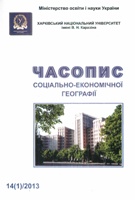Between Asian and America: geopolitics, globalization, and international migration
Keywords:
globalization, immigration, China, India, NICs
Abstract
In this paper we will briefly review recent histories of Asian civilizations, with a focus on the accelerated international division of labor and economic growth across Asia over the last half century. We also look at the relationship with US immigration admission policies toward Asian immigrants and their consequences. We then address the recent shift from a one-way brain drain (from developing countries–in this case Asia, to developed countries–the United States) to a model of networked brain circulation among developing and developed nations. Finally we connect immigration policies and their consequences with the US’s Asia policies.
Downloads
Download data is not yet available.
References
1. E. Billes 1999. L’ouverture exterieur chinoise: de la chine a une grande chine? Une etude du fait sino-transtional. These de Doctorat en Economie Internationale. Universite Pierre Mendes France, Grenboble
2. Castells, Manuel 1998. End of Millennium. Oxford: Blackwell Publishers.
3. Castles, Stephen and Mark J. Miller, 2009. Migration in the Asia-Pacific Region. Migration Information Resource Research Paper, Migration Policy Institute. URL: http://www.migrationinformation.org/Feature/display.cfm?id=733 Last accessed 10/27/10
4. Chiang, Min-Hua and Bernard Gerbier, 2010. Foreign factors in Taiwan’s economic transformation. Journal of the Asia Pacific Economy 15(2): 148-165.
5. Chen, Xiangming 1996. Taiwan investments in China and Southeast Asia: go West, but also go South. Asian Survey. 36(5): 447-467.
6. Ding, Loni 2001. “Ancestors in the Americas Part I,” Public Broadcasting Service.
7. Hing, Bill Ong. 1994. Making and Remaking Asian America through Immigration Policy, 1850-1990. Stanford: Stanford University Press. page 31
8. International Herald Tribune, US Schools Attract Smaller Share of International Student, The New York Times. September 12, 2010. URL: http://www.nytimes.com/2010/09/13/education/13iht-educBrief13.html Last Accessed 10/27/10
9. Institute of International Education, 2009. Open Doors Report on International Student Exchange, Press Releases, URL: http://opendoors.iienetwork.org/?p=150649 Last Accessed 10/27/10
10. Ong, Paul, Edna Bonacich, and Lucie Cheng, 1994. The New Asian Immigration in Los Angeles and Global Re-structuring. Philadelphia: Temple University Press
11. Terrazas, Aaron and Jeanne Batalova, 2010. Chinese Immigrants in the United States URL: http://www.migrationinformation.org/USFocus/display.cfm?ID=781;
12. Terrazas, Aaron and Cristina Batog, 2010. Indian Immigrants in the United States URL: http://www.migrationinformation.org/USFocus/display.cfm?ID=785 last accessed on 10/26/10
13. United Nations, 2006. International Migration and Development (report of the Secretary-General of the United Nations to the 60th Session of the General Assembly, New York, May 15, 2006, A/60/871).
14. Wallenstein, Immanuel. 1974. The Modern World-System, vol. I: Capitalist Agriculture and the Origins of the European World-Economy in the Sixteenth Century. New York/London: Academic Press
15. Wang, Huiyao ed., 2009, (in Chinese).
16. Zhang, Jiawei 100 college leaders to be trained overseas this year. China Daily. May 18th, 2010. URL: http://www.chinadaily.com.cn/china/2010-05/18/content_9864659.htm Last Accessed 10/27/2010
2. Castells, Manuel 1998. End of Millennium. Oxford: Blackwell Publishers.
3. Castles, Stephen and Mark J. Miller, 2009. Migration in the Asia-Pacific Region. Migration Information Resource Research Paper, Migration Policy Institute. URL: http://www.migrationinformation.org/Feature/display.cfm?id=733 Last accessed 10/27/10
4. Chiang, Min-Hua and Bernard Gerbier, 2010. Foreign factors in Taiwan’s economic transformation. Journal of the Asia Pacific Economy 15(2): 148-165.
5. Chen, Xiangming 1996. Taiwan investments in China and Southeast Asia: go West, but also go South. Asian Survey. 36(5): 447-467.
6. Ding, Loni 2001. “Ancestors in the Americas Part I,” Public Broadcasting Service.
7. Hing, Bill Ong. 1994. Making and Remaking Asian America through Immigration Policy, 1850-1990. Stanford: Stanford University Press. page 31
8. International Herald Tribune, US Schools Attract Smaller Share of International Student, The New York Times. September 12, 2010. URL: http://www.nytimes.com/2010/09/13/education/13iht-educBrief13.html Last Accessed 10/27/10
9. Institute of International Education, 2009. Open Doors Report on International Student Exchange, Press Releases, URL: http://opendoors.iienetwork.org/?p=150649 Last Accessed 10/27/10
10. Ong, Paul, Edna Bonacich, and Lucie Cheng, 1994. The New Asian Immigration in Los Angeles and Global Re-structuring. Philadelphia: Temple University Press
11. Terrazas, Aaron and Jeanne Batalova, 2010. Chinese Immigrants in the United States URL: http://www.migrationinformation.org/USFocus/display.cfm?ID=781;
12. Terrazas, Aaron and Cristina Batog, 2010. Indian Immigrants in the United States URL: http://www.migrationinformation.org/USFocus/display.cfm?ID=785 last accessed on 10/26/10
13. United Nations, 2006. International Migration and Development (report of the Secretary-General of the United Nations to the 60th Session of the General Assembly, New York, May 15, 2006, A/60/871).
14. Wallenstein, Immanuel. 1974. The Modern World-System, vol. I: Capitalist Agriculture and the Origins of the European World-Economy in the Sixteenth Century. New York/London: Academic Press
15. Wang, Huiyao ed., 2009, (in Chinese).
16. Zhang, Jiawei 100 college leaders to be trained overseas this year. China Daily. May 18th, 2010. URL: http://www.chinadaily.com.cn/china/2010-05/18/content_9864659.htm Last Accessed 10/27/2010
Published
2014-06-10
Cited
How to Cite
Li, W., & Yu, W. (2014). Between Asian and America: geopolitics, globalization, and international migration. Human Geography Journal, 14(1), 18-25. https://doi.org/10.26565/2076-1333-2013-14-03
Section
Горизонти науки




